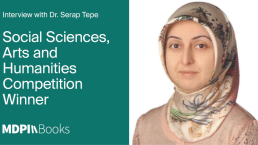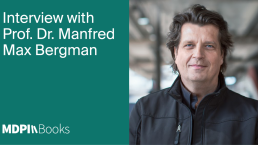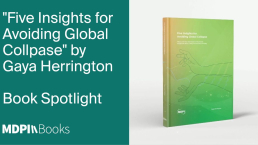
Applied Mathematics in Ferroelectricity and Piezoelectricity: Interview with Kenji Uchino
The Google Search Engine has revolutionised how we absorb information. In a matter of seconds, we can discover information on a specific topic from anywhere in the world. The practice has become so widespread in modern life that if there’s something you don’t understand, you will most likely hear someone telling you to “just Google it.”
Yet this ability to glean information from Google’s Seach Engine can prove detrimental to our basic understanding of certain fields of study. An argument can be made that overreliance on the internet for information can disrupt our cognitive learning and retention of basic knowledge. Kenji Uchino, current Academy Professor of Emeritus Academy, argues that this is exactly the case for newer engineering students.
Prerequisite Knowledge Check
Giving his own “Prerequisite Knowledge Check” to engineering students over the course of 30 years, Uchino noticed a significant reduction in basic engineering knowledge. In the 1990s and early 2000s, the average score among students was 70–80%; however, in the middle of the 2000s, the scores began to drop year-on-year, most recently reaching an average low of 30–40%.
That the scores began to decline as Google became more ubiquitous in society and education is not a coincidence, according to Uchino. So how can basic engineering knowledge be improved and safeguarded in an era of unlimited and easy-to-absorb information?
Applied Mathematics in Ferroelectricity and Piezoelectricity
“Applied Mathematics in Ferroelectricity and Piezoelectricity” was written by Uchino to bridge the gap between the knowledge gleaned from the internet by students and the first-hand analytical knowledge they can demonstrate in the classroom. We sat down with Uchino to discuss his new Open Access Monograph, simplicity in physics, “Google Syndrome”, and advice for future students using the internet for research.
Your test that measures the basic engineering knowledge of students has not changed in over 30 years. Why was it important not to adapt it for later generations of students?
Good question! You may know that Shakespeare’s plays of the 17th century are a must–know in the field of Literature; well, Newton’s equation of motion in 17th century is a must-know in Science and Engineering. What I created for the “Prerequisite Knowledge Check” in my textbook were 10 basic pieces of knowledge in electrical and mechanical engineering. These items should be learned in high school or during an undergraduate course. I believe these fundamentals will remain as the “must-know” items to learn, even for students in the next century, in order for research to proceed further.
You say that physics prefers “simplicity” when it comes to converting complicated phenomena. Could you briefly explain the concepts of “ferroelectricity” and “piezoelectricity” for us?
I am pleased to explain them. I will explain “piezoelectricity” first. When we apply an electric field on a particular crystal, that is mostly among structurally asymmetric crystals, crystal deformation is induced. The deformation comes out nonlinearly as a function of the electric field in general. But, when the electric field is small, the displacement can be approximated as “linear”, because we scientists like “simplicity” in theoretical analysis. This linearity between the electric field and displacement is called “piezoelectricity.”
Next, let me explain “ferroelectricity,” which is one of the simplest nonlinear examples. Some asymmetric crystals possess so-called “spontaneous polarization”, because slightly shifted + and – ionic states are created from the symmetrical zero states. When these + and – spontaneous polarization states can be switched by the external electric field, we call it “ferroelectricity.”
Why are you interested in these fields in particular?
Ferroelectricity and piezoelectricity are analogous to ferromagnetic and magnetostrictive effects. The difference between ferroelectric and ferromagnetic exists in the control method (using either an electric field or magnetic field). Electromagnetic transducers, motors and transformers in particular have been utilized for most applications so far.
However, the difficulty in the miniaturization of smaller-than-30W devices, and the magnetic noise generation in magnetic-based devices, are the most serious bottlenecks troubling further developments in portable electronic equipment. Therefore, ferroelectric and piezoelectric motors and transformers have become preferable in recent compact and portable electronic equipment.
Because I am the inventor of the first ceramic actuator material and PMN (lead magnesium niobate)-based ceramics and their multilayer design, I am particularly interested in the commercialization of these ceramic actuators.
Why was it important for you to address the issue of what you refer to in the book as ‘Google Syndrome’?
Ok, I will explain what I mean by “Google Syndrome”. The search engine “Google” started in 1998. After this event, the general research approach changed significantly. When I suggest to my current Ph. D. graduate students to research something new, most of them take the following research steps:
- (1) they search for the most recent research papers on the indicated topics using the “Google” search engine;
- (2) they then summarize the results and infer the unstudied parts by believing the already-published results are correct;
- (3) finally, based on this information, they set a research plan for themselves.
More recently, we are even seeing research plans/proposals being generated with ChatGPT. This “addiction” to a certain way of researching has been named “Google Syndrome”. The important point is the fact that, through this method of research, no completely new or original ideas develop, since Google and ChatGPT can generate only the combined ideas of already-published materials.
In the preface of my textbook, I presented the statistics behind the fundamental knowledge decay of the students during the period when the Google search engine became popular (after 2005). In comparison with Pre-Google students, Google-generation students seem to be reluctant to remember the fundamental physics formulae; they simply rely on the Google search engine. This change in study attitude is directly reflected in the score recorded by the “Prerequisite Knowledge Check”: 80% in 2005, and down to 30% in 2020.
How does the book help students who have perhaps in the past relied too heavily on internet information rather than acquiring practical, first-hand knowledge?
My textbook introduces how fundamental mathematical formulas can be derived without skipping the derivation processes. Once the student changes his/her research attitude and commits to learning the mathematical skills and works against “Google Syndrome”, the student will improve his/her skills and work towards generating unique ideas in the future, as opposed to merely relying on Google information for already-established knowledge.
What advice would you give to future students who are interested in physics, electrical, or machinal engineering?
I am not interested in pushing future students to follow the research process of my student’s period, when we did not possess a personal computer. However, I will express my anxiety about the overly Google-oriented research strategy at present.
Let me introduce my first discovery from 1978, PMN (lead magnesium niobate)-based electrostrictive materials. At that point in time, nobody believed that the “secondary” electromechanical coupling effect, that is, “electrostriction”, strain-generated in proportion to the square of the applied electric field and showed larger magnitude than the “primary” electromechanical coupling effect, that is, the “piezoelectric effect”, strain-generated in proportion directly to the applied electric field. Because I was a researcher, who did not believe other researcher’s studies directly, I did not follow the well-known theory at the time that the “secondary effect” was smaller than the “primary effect”. Accordingly, I discovered gigantic electrostriction on PMN-based ceramics.
If the Google search engine had already been invented during this period, and if I were relying much on information from the internet, this discovery would not have been made. In conclusion, my advice to future students would be to not boycott Google entirely, but do not unreservedly believe the information on the Google Search Engine. If you have not verified the results by yourself, approach any research report with caution. Using Google with skepticism is a good way not to miss out on an opportunity for a new discovery.
You say in your introduction to the book that you hope your readers can become part of a “post-Google generation”. What would such a generation look like? And do you see a future in which technology can complement instead of hindering how we absorb and retain basic knowledge?
My answer here may partially overlap with the answer above. My wish for the new generation is to preserve and further improve unique new ideas, because I have found that no truly unique scientific ideas in ferroelectricity and piezoelectricity have been developed between 2005–2020. Many of the most recent papers start from comprehensive previous studies probably cited on Google, then the author seems to choose a research topic “because it has not been done yet”. Though these papers seem to be worth publishing, I do not think they demonstrate epoch-making unique ideas, instead demonstrating a hybrid idea that is only the result of the previous studies.
Thus, I suggest that the “Post-Google Generation” should aim to develop truly unique ideas based on their own research undertaken, with the fundamental and well-established knowledge as a starting point. This research attitude is commonly important to any scientific and engineering areas, including ferroelectricity and piezoelectricity.
Download and read our Open Access Monograph “Applied Mathematics in Ferroelectricity and Piezoelectricity”. To explore more MDPI Books Open Access titles, head to our Online Library.









